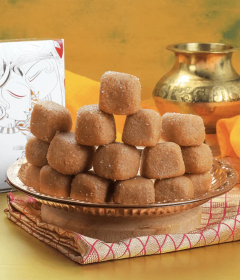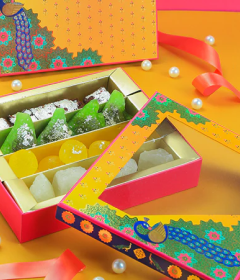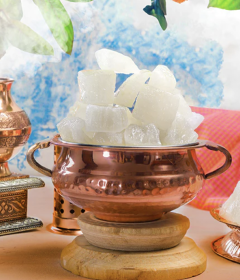India is known as much for its eclectic variety of food as for its unique celebration of festivals. You'll find traditional sweet shops in every lane and bylane of this country selling mouthwatering desserts at affordable prices. If you're craving for a perfect, crunchy bite of happiness, look no further than the irresistible gajak. Originating in a small district called Morena at the heart of Madhya Pradesh, Gajak is a popular, crispy and textured dessert made of sesame seeds (til) or peanuts and jaggery. The extent to which jaggery is cooked determines the softness/hardness of this sweet. Apart from these, dry fruits such as almonds, cashews, walnuts and pistachios are integral components of the overall recipe.
Cultural Reference
There's a famous Marathi saying "til gud kha god god bola" which means eat sesame seeds and jaggery and speak good. This certainly rings true for gajak lovers.
Gajak has been an inseparable part of Indian festival cuisine for a long time. Especially, harvest-time festivals such as Lohri, Pongal and Makar Sankranti are enjoyed best with these dry and delicious sweets. The dessert exudes a feeling of warmth and nostalgia in the middle of cold, harsh North-Indian winter.
History of gajak
The story of gajak's existence goes long back into the Mughal era. During that period, kings of Hindu dynasties used til, gur, chana for their soldiers and horses as a rich source of nourishment and energy during war. Later, due to its high nutritional value, commoners began using the same ingredients. This is how a simple recipe became a part of India's exquisite culinary legacy and came to be introduced as gajak.
Variations of gajak
Based on the region where it's prepared, gajak has many variations across India. In Southern India, it's usually prepared as round balls known as 'laddus' and in Northern India, the preparation varies a little such as replacing jaggery with sugar (sugar gajak) or using peanuts instead of sesame. In todays day and age the humble gajaks are available in different flavours each of which is as popular and enticing. Rolls, peanuts, cashew, dry fruits and classic gajaks are some of the widely-known varieties.
Gajak rolls: This is a popular type of gajak that comes in two varieties - one filled with soft condensed milk (khoya) and the other without core. Garnished with pista and rolls, you can't simply afford to let this one go.
Peanut chikki: This variant is made of gur and peanut. It's a little hard but crispy giving you a sweet taste of gur along with crunchiness of peanut.
Chocolate gajak: As the name suggests, this variant is laden with chocolate which makes it all the more irresistible.
Rebdi: This is a slightly hardened variant of gajak but as sumptuous and as nutritious.
Range of flavours Bansiwala has
We at Bansiwala offers a wide variety of gajaks such as chocolate gajak, gur gajak, gajak roll, kutema gur gajak, mawa laddoo, mungfali chikki, rebdi and special soft gajak. Each of them is dearly loved and appreciated by sweet lovers from across the globe. At Bansiwala, the aim is to present before its customers the unique flavours of different variations of gajak without compromising on their originality.So when are you ordering your batch of Gajak?













